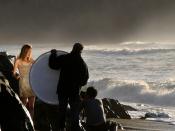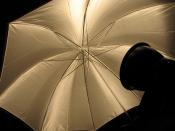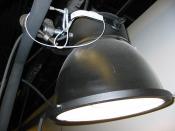INTRODUCTION
Motion picture lighting is seldom static, for even the slightest movement of the camera or the subject can cause the lighting to shift. Movies take so long to complete, in part because of the enormous complexities involved in lighting each new shot. The cinematographer must make allowances for every movement within a continuous take. Each different colour, shape, and texture reflects or absorbs differing amounts of light. If an image is photographed in depth, an even greater complication is involved, for the lighting must also be in depth.
When it comes to shooting on an exterior location, complications occur, particularly with regard to exposure, contrast and continuity.
EXTERIOR LIGHTING
For exterior lighting, the direct sunlight acts as the key light and reflections from buildings, object and clothing provide "natural" fill. Unless the subject is facing the sun, still fairly low in the sky, the lighting contrast is too high for film and video.
If exposing for the darker areas the bright areas are blown out, hazy and overexposed.
PROBLEMS TO AVOID
(REFLECTORS)
An obvious problem is to shoot people at midday on a bright day, especially when it comes to the actor's eyes, which is almost impossible to see because of shadows. The eyes is an important aspect when it comes to expressing emotions., this is where the charm of reflectors become very useful.
2
The reflector which uses the strong illumination from the sun, bounced off a reflective surface. Obviously, the bigger a reflector board, the greater light gathering and reflection capability there is. Flexible reflectors can handle and direct light more precisely than flat reflectors. Concave reflectors focus light into specula or focussed bundles. Convex reflectors spread light more evenly. Mat rather than glossy textured boards produce short throw, low distance, and soft light. Shiny...


